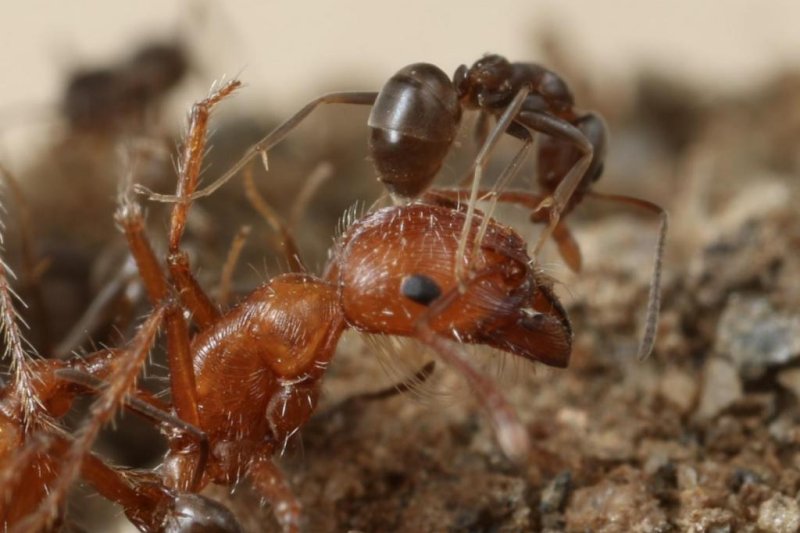An Argentine ant is seen dabbing harmful chemicals on the body of its enemy. Photo by University of California, Riverside
Jan. 24 (UPI) -- New research suggests chemical weaponry is essential to the territorial conquests of Argentine ants, a species that inhabits six continents and dozens of oceanic islands.
Previous studies have detailed the species' other competitive advantages, like having more than one queen per colony. The species is also extremely adaptable and has disposition for transience. The ants don't build permanent homes like so many other species.
Perhaps most important, however, is the species' extreme aggression. And the latest findings -- published this week in the journal Scientific Reports -- suggest that aggression is buoyed by an arsenal of chemical weapons.
Scientists at the University of California, Riverside found the conquistadors of the ant world have been deploying toxic secretions against California's native harvester ants -- and to great effect.
All ant species excrete chemicals as a form of communication, but for Argentine ants, the mechanism is also a weapon. When in conflict with rivals, the Argentine ants place their gaster, a part of their abdomen, on the enemy and excrete an assortment of chemicals. The behavior is known as faster bending.
Tests by UCR researchers revealed the combative concoctions to contain two main chemical compounds, dolichodial and iridomyrmecin. When scientists isolated the compounds and tested them on harvester ants, they found the toxins trigger irritation and disorientation.
"This research finding experimentally verified the long-held assumption that Argentine ants use gaster-produced compounds during aggressive interactions with other ant species," Hwan Choe, an assistant professor of entomology at UCR, said in a news release. "They use these compounds not only for incapacitating the opponent, but also for calling more nestmates from nearby locations for their help in combat."
Researchers hope synthetic versions of the compounds could be deployed against the invasive ant.
"Potentially, these compounds could be used in a bait to attract Argentine ants toward a poison while at the same time acting as a deterrent to harmless native ants," Choe said.















